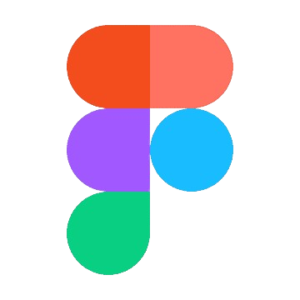
What is a UX/UI Design Job?
UX/UI Design involves creating the user experience (UX) and user interface (UI) of digital products like websites and apps to ensure they are user-friendly, visually appealing, and easy to navigate.
UX Design focuses on the overall experience users have with a product, ensuring it is efficient, intuitive, and enjoyable.
UI Design is about the look and feel of the product, including layout, colors, typography, and visual elements that enhance usability.
Together, UX/UI designers ensure a seamless, engaging, and functional interaction between users and digital products.
Initials: The UX/UI design niche does not require an initial investment, as you can start by building a portfolio using free tools and resources.
How Much Can You Earn with UX/UI Design Annually?
The annual earnings of a UX/UI designer vary widely depending on factors such as experience, location, industry, and employment type (freelance vs. full-time). Below is a general breakdown:
Entry-Level Designers:
Annual Salary: $50,000 – $70,000
Details: Beginners focus on foundational skills, such as wireframing, visual design, and usability principles, while gaining real-world experience.
Mid-Level Designers:
Annual Salary: $70,000 – $100,000
Details: These professionals are skilled in advanced prototyping, wireframing, usability testing, and designing user-centric interfaces.
Senior Designers:
Annual Salary: $100,000 – $150,000+
Details: Senior roles involve leading teams, managing design systems, and executing high-level strategies for complex projects.

Commonly Used Software for UX/UI Design
Here are some commonly used software for UX/UI Design:
Purpose: Collaborative Design and Prototyping
Figma is a powerful, cloud-based design tool used for creating user interfaces, wireframes, and prototypes collaboratively. It allows real-time collaboration, enabling teams to work together seamlessly on projects. Its versatility makes it ideal for responsive design and testing user interactions.

Purpose: UI/UX Design and Interactive Prototyping
Adobe XD specializes in creating user experiences, offering features to design, prototype, and test interactive interfaces. It integrates with Adobe’s suite of tools, making it a natural choice for Adobe users. Adobe XD is excellent for creating app and web layouts with animations and transitions.

Purpose: Vector-Based UI Design
Sketch is a vector graphic editor known for designing user interfaces and managing design systems. It’s ideal for creating reusable components, wireframes, and high-fidelity designs. Its focus on simplicity and functionality makes it a top choice for building clean and scalable UI designs.

Purpose: Prototyping and Collaboration
InVision focuses on transforming static designs into interactive prototypes to test user experiences. It is ideal for usability testing and collecting feedback through its collaboration tools. InVision helps designers present concepts effectively and refine interfaces based on input.

Essential Physical Equipment for UX/UI Design
Here is a list of basic and additional physical tools needed for UX/UI design:
Basic Equipment (Must-Have)
Computer/Laptop:
A powerful machine is essential for running design tools like Figma, Adobe XD, or Photoshop smoothly, while also handling multitasking without lag (e.g., Apple MacBook Pro, Dell Latitude 3550 Business Laptop).
Monitor:
A high-resolution display provides exceptional clarity and color accuracy, which are critical for creating detailed, pixel-perfect designs and ensuring proper visuals (e.g., Samsung 34′ Odyssey, LG UltraFine).
Keyboard & Mouse:
An ergonomic keyboard and mouse reduce wrist strain and improve comfort, enabling you to work efficiently for hours on intricate designs without fatigue (e.g., Lenovo 510 Wireless Keyboard & Mouse Combo, Dell Pro KM5221W Keyboard & Mouse).
Graphics Tablet:
Graphics tablets allow for precise input, making it easier to draw complex illustrations, create hand-drawn elements, and refine detailed design work (e.g., Wacom Intuos, Samsung Galaxy Tab).
Additional Equipment (Nice-to-Have):
Ergonomic Workspace:
An ergonomic workspace provides essential lumbar support and encourages good posture, reducing back pain and helping you focus during long hours of creative work (e.g., Marsail Ergonomic Office Chair, ErGear Height Adjustable Electric Standing Desk).
External Storage:
External storage devices ensure that your large design files are securely backed up, offering peace of mind and easy access to your work wherever you go (e.g., SanDisk Extreme SSD, Samsung T7 SSD).
Noise-Canceling Headphones:
These headphones block out distracting background noise, creating a focused workspace for brainstorming, collaborating, and completing intricate design projects (e.g., Sony WH-1000XM5).
As an Amazon Associate, I earn from qualifying purchases.
Learn UX/UI Design
YouTube Tutorial: UI/UX Design Tutorial – Wireframe, Mockup & Design in Figma
Tips to Succeed in UX/UI Design
Learn the Basics: Start by understanding fundamental design principles like color theory, typography, and layout.
Practice Regularly: Work on small personal projects, and redesign apps, or websites to build your portfolio.
Network: Join design communities, attend workshops, and seek feedback from experienced designers.
Use Design Tools: Familiarize yourself with essential tools like Figma, Sketch, and Adobe XD through tutorials and hands-on practice.
Stay Updated: UX/UI design is constantly evolving—keep learning about new trends, tools, and user behavior insights.
